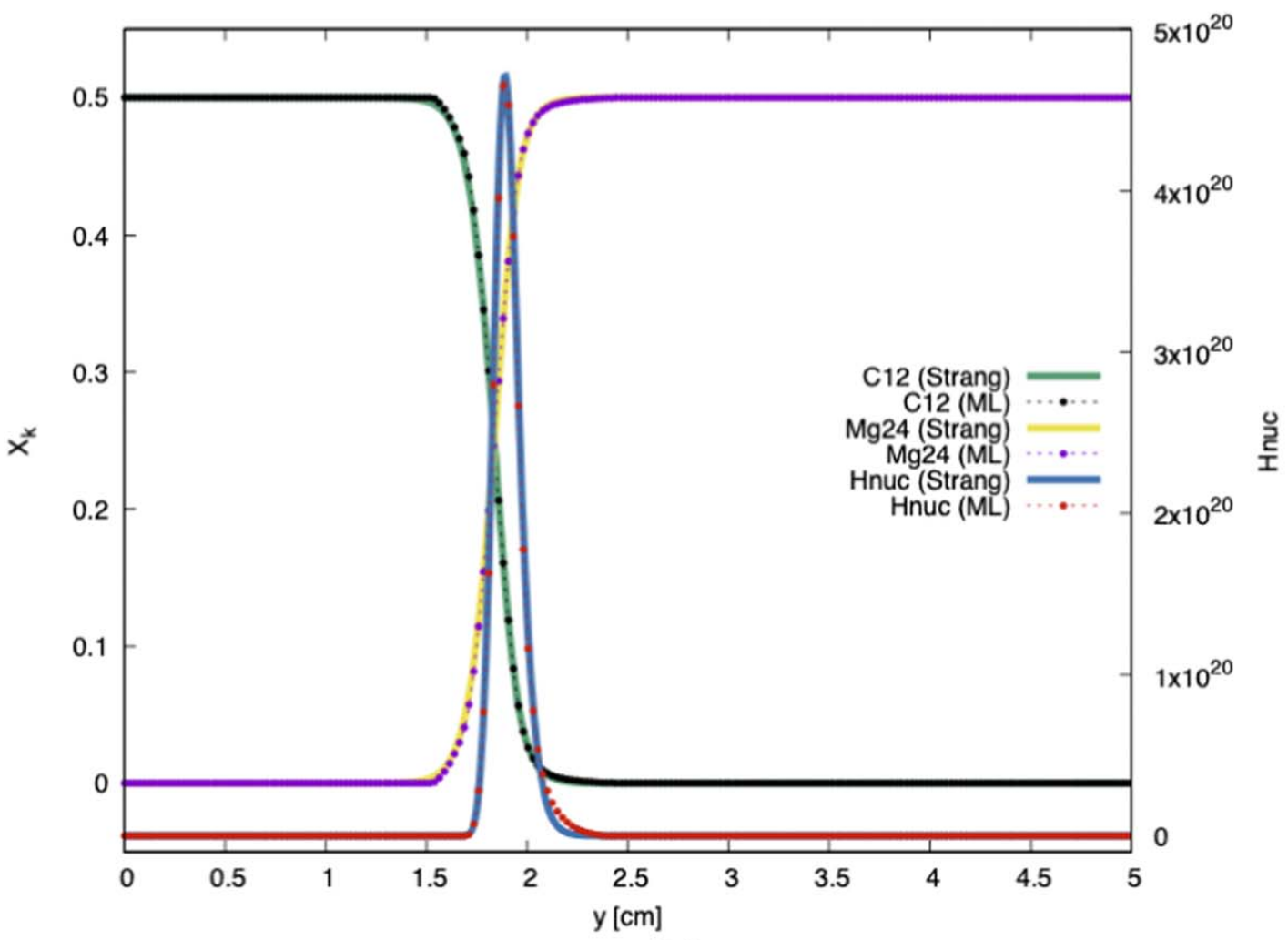Machine Learning For Surrogate Models
Our flames with surrogate ML models used our low-Mach hydrodynamics code MAESTROeX.
MAESTROeX is an open-source code, freely available on the MAESTROeX GitHub.
Nuclear reactions are computationally intensive!
After working to accelerate our reaction solvers on GPUs, I saw the great utility of machine learning for assisting PDE solvers and started a project to address an important niche question the astrophysics community had not yet researched.
What if we could replace expensive, time-consuming reaction network solvers with good approximate surrogate models using machine learning?
If successful, ML surrogate techniques for reactions could drastically speed up the most time-intensive physics module in nearly all explosive astrophysics simulations.
Why?
Well, in high-energy nuclear astrophysics (e.g. supernovae and neutron star mergers), turbulence, radiation, and nuclear reactions drive the dynamics. Yet, especially in the reaction physics case, these equations mathematically generate stiff nonlinearities where we must focus computational intensity to solve with acceptable accuracy. Approximate methods can be wildly wrong!
Physics-informed neural networks (PINNs) are promising but the equations we must solve for reaction physics are not only nonlinear but extremely stiff. In mathematical terms, when we construct a linear approximation to the full equations, the ratio of Jacobian elements can be greater than twenty orders of magnitude for explosive burning simulations. This makes the gradient error functions in PINNs quite difficult to use for training surrogate models over a large enough dynamic range to capture a complete burning model.
We thus started our research with a simpler forward neural network and found we needed a recurrent neural network for gradient descent to train the network effectively. I worked with other LBL scientists to study simple laminar flame models in our MAESTROeX code instead of leaping straight into turbulent flame modeling, and our results with a simple flame model were promising.

Our first paper thus demonstrated a successful proof-of-concept method for nuclear reaction surrogate modeling by coupling PyTorch to our MAESTROeX low-Mach hydrodynamics code.
For details, see Fan et al. (2022).
I’m eager to extend our initial work to explosive astrophysics by expanding the training dataset to a more comprehensive flame model. In addition, there are many follow-up questions for investigating alternate neural network structures and training techniques to better incorporate reaction physics constraints.